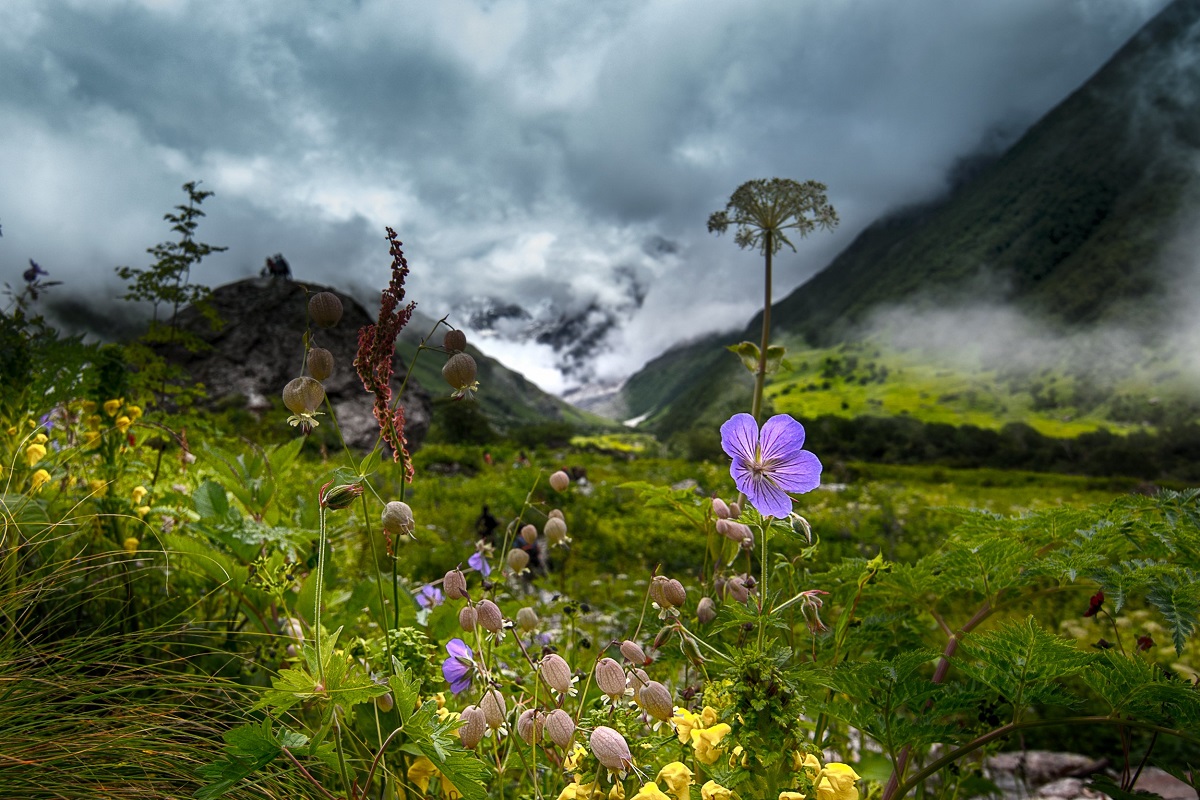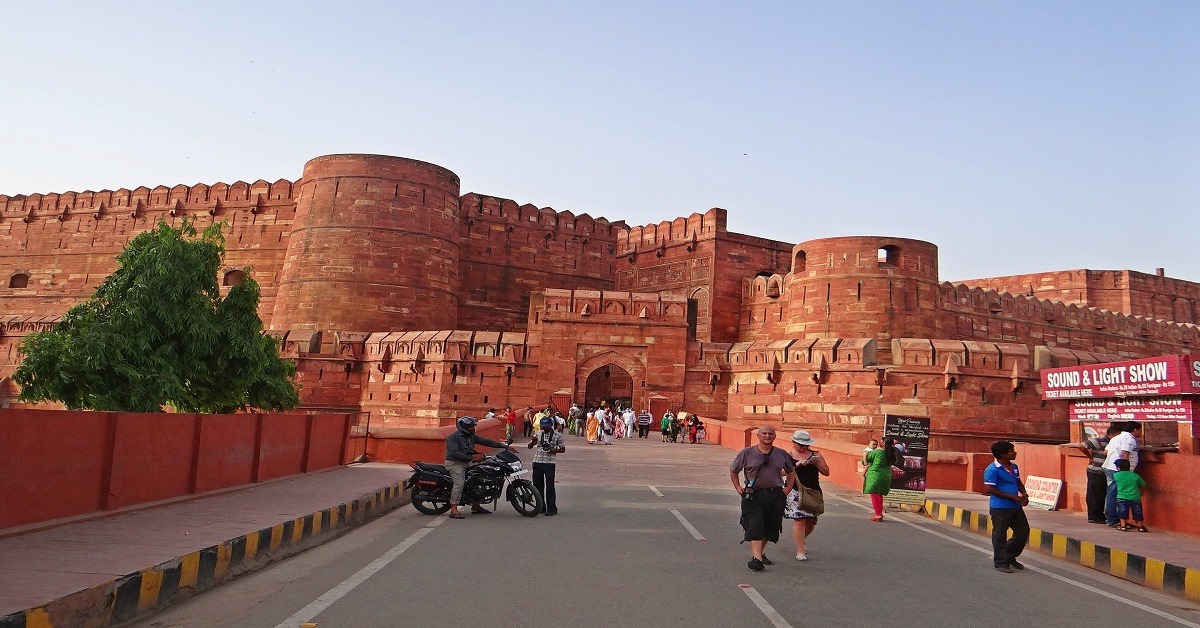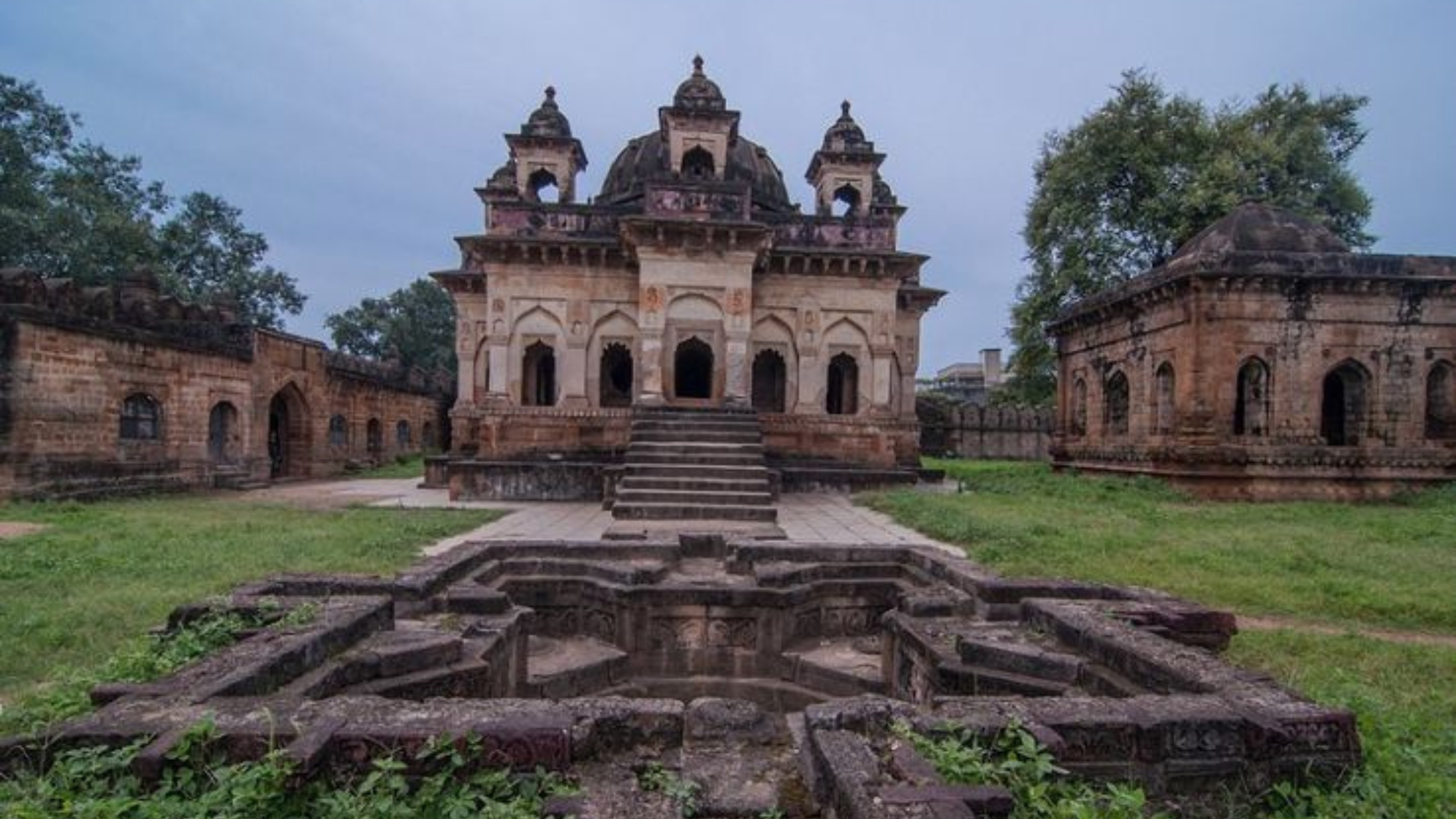The Valley of Flowers National Park is a major tourist attraction located in North Chamoli and Pithoragarh in Indian state of Uttarakhand. The meadows are well known for their beautiful Alpine flowers and a rich diversity of flora. The area contains much more than breathtaking scenic beauty. You can also find numerous endangered animal species like the snow leopard, Asiatic black bear, brown bear, musk deer, blue sheep and red Fox. Offering heavenly scenic beauty this Indian National Park is truly something you would not like to miss when in Uttarakhand. The park lies in a temperate Alpine zone and has been declared UNESCO World network of Biosphere Reserves.
Valley of Flowers National Park Built by
Together the Nanda Devi National Park and the valley of flowers are known as the Nanda Devi biosphere reserve. It was in the year 1982 when the valley of flowers was declared as a National Park. In the year 2005 it was declared as a UNESCO World Heritage site. Initially the valley was known as Bhayandar Valley which meant the natures wonder. It was in 1931 the British mountaineer Frank S Smythe discovered the valley when he chanced upon there on his return journey from his expedition to Mount Kamet. On witnessing the sheer natural grandeur of the place and the unbelievable array of colorful flowers Smythe named the place the valley of flowers. Frank S Smythe also wrote a book with the same name. The Gauri Parbat is the highest point of the park and is about 6719 meter above the mean sea level.
Valley of Flowers Trekking Timing
You must visit the valley of flowers National Park during the daylight hours. The park has some of the most exciting trekking routes which you can undertake to witness the natural beauty of the place to its fullest. The park opens from 7 a.m. in the morning till 5 p.m. in the evening, but the last point of entry in the park is at 2 p.m. in the afternoon. Ideally you should plan your return journey by 1 p.m. so that you can be back at the entry or the exit point by 5 o’clock in the evening. It is mandatory to leave the park before the sunset hours.
Valley of Flowers National Park Trekking Information
The valley of flowers is a Himalayan Valley with a high altitude. Famous mountaineers and botanist has mentioned the name of this Valley for its rich flora and fauna and simply breathtaking natural beauty. The place also has prominent mention in the context of Hindu religion. The valley has seen several Indian Yogi who have visited the place regularly for peaceful meditation. The vegetation of the area represents the diverse Western Himalayan Alpine Shrub and meadows eco-region. The region is located in the transition zone between the great Himalayan ranges and Zanskar Ranges between the south and the north. The region consists of a number of threatened and endangered species of both animals and plants.
The valley of flowers is in the Pushpawati valley which is about 23 km Northwest of the Nanda Devi Park. The valley is situated about 20 km from the Nanda Devi Park. The park is placed under the jurisdiction of the Uttarakhand State Forestry department. Human settlement and pasture grazing is strictly prohibited in the park since 1983. The park is open for the visitors only between the months of June to October. The other parts of the year are the entire park is covered in a thick blanket of snow.
How to Reach Valley of Flowers: (Air Road and Train)
Located in Uttarakhand you can reach the valley of flowers through different networks of flight Railway and even the national highways.
The nearest Airport is in Dehradun which is about to 295 kilometers away from the park.
Rishikesh is the nearest railway station from the park which is about 276 kilometers away.
If you are taking the roadways and the national highway Govind Ghat is the place you can get the nearest to from the valley of flowers. This is about an 11 hours journey from Dehradun to Joshimath. Then again you will have to travel for 1 hour to reach Govindghat. Govindghat is about 13 kilometers away and offers you a narrow steep trek along the mountain trail to the Ghangaria base camp. The entire journey will take you around 4 to 8 hours.
Nanda Devi and Valley of Flowers National Parks Entrance Fee:
The Indian tourist must be Rs 150 for a 3 day pass. Foreign tourists must pay and entry fee of Rs. 650 for the same 3 day pass. For every additional day after these three days Indian tourist must pay and extra of Rs. 50 and foreigners must pay Rs. 250.
The Forest Department Check Point located less than about a kilometer from the Ghangaria Base Camp is the official entry point for the valley of flowers. This is the point where the entry fees must be paid and all the permits must be obtained. Every tourist must ensure that they are carrying a proper photo identification proof with them. If you have a porter or a mule you will have to pay an extra amount of Rs. 1000 for the Ghangaria trek. A guide all along the way will cost you Rs. 2,000 extra.
If you are planning to travel by helicopter one way from Govindghat to Ghangaria base camp you will have to pay Rs, 3500 for every person.
Valley of Flowers & Important Structures
The Valley Of Flowers National Park promises every visitor a stunning landscape which will seldom be rivaled by any other place in this nation. Situated in Uttarakhand, bordered by Tibet and Nepal the region bursts into prismatic array of colors soon after the monsoons. The high altitude of the Himalayan Valley proves to the highly conducive for an overwhelming blossom of 300 different varieties of beautiful and pristine Alpine flowers. When the flowers in the valley are in a complete blossom it looks as if a bright carpet of color has been spread across the mountains which makes an ethereal picture against the white snow capped mountains background.
The national Park is spread across a sprawling area of 87.5 square kilometers and also offers a main glacier corridor. Back in 2013 the monstrous floods dealt a heavy blow to the trekking route in the valley of flowers. It took about a couple of years and the valley reopened once again in 2015.
Best Time to Visit Valley of Flowers
The Valley Of Flowers open in the beginning of June, and close by the end of October. After this the area is covered in a thick blanket of snow. You can visit the park anytime between these months. However the time from mid July to mid August happens to be the best period to visit this Park. This is the time just after the first monsoon showers and the flowers are in full bloom.
If you visit the place before July you will hardly find any flowers at all. However around this time you can witness the melting glaciers and snow. The color of the valley changes quite dramatically after the mid of August. The bright and vibrant color burst of the valley slowly wilts into a yellowish gloom. In September the valley enjoy s a clear weather but again you will not find much of flowers.
History of valley of flowers
The valley of flowers National Park apart from being a major tourist attraction of Uttarakhand also has a religious importance. This is particularly pertinent in the context of Hindu religion. It has been mentioned in the opening of the discussion that several Indian Yogi have come down to this Park for practicing meditation. This is what that awards the place with a certain spiritual and mystical value.
As per the local folklore it is believed that the Valley Of Flowers is the same place from where Hanuman brought the divine Herb of Sanjivani buti to revive Lakshman after he was struck by Meghnaath. This is one of the most popular tales told in the Hindu epic of Ramayana. Even in the current time many people believe that the Sanjivani Buti or the magical herb truly grows in this park.
Apart from the myth of the Sanjivani this enchanting land is also connected to a number of other local folklore that has been carried from generation to generation till the present time. Locals also believe that this enchanting land of nature happens to be the favorite playground of divine fairy that descends from the heights of Immortal heaven when there are no humans across the area.
Attractions nearby valley of flowers
After visiting the Valley Of Flowers you should make an itinerary of some other places in the neighboring areas which are just as beautiful and as stunning. The first one among them happens to be the Gorson Gugyal. This is a 3 kilometer trekking train from Auli and offers you stunning images of green pastures coniferous forests and endless oak trees.
The next destination in line will be Malari. This is a mountain encircled small village on the borders of Indo Tibet. Simple and Pristine you must take a look at this village to witness simplicity at its best. Pandukeshwar is your next destination. This is a house of Lord Badrinath and is at a distance of 18 km from Joshi math. Nearby to Joshi math there is a small village named Niti. This is the last village in the outpost of the Indo-Tibet border.
About 14 kilometers away from the National Park the govindghat is the major destination for Hindu pilgrims. Located at the confluence of Lakshman Ganga and Alakananda river Govind Ghat is the perfect Hamlet for Indian pilgrims. If you are in the Uttarakhand region the trip can never be complete without a darshan of Badrinath. Dominant part of the Hindu Char Dham, Badrinath lies at a distance of 39 kilometers from the National Park.







